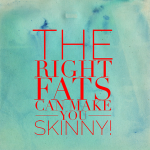Do you take fish oil, krill oil or algae oil? If not, chances are you fall into the 90% of Americans with inadequate levels of Omega 3’s. A great measure of health and one we use when assessing healthy aging in our clients is the Omega 6 to Omega 3 ratio. The optimal ratio is @ 2:1 (Omega 6 to Omega 3’s) and the average American sits around 20:1. I’d like to give you a few reasons to consider getting Omega 3’s in your diet.
So for a quick review Omega 3’s are essential to our health in many ways. In fact, it is surprising how many ways. They have a significant anti-inflammatory effect and help to strengthen the walls of our cells (along with healthy omega 6’s). Additionally, if you are looking to boost your mood, you’ll want to be sure that your ratio’s are optimal. This has been shown to help with both anxiety and depression. The first news to attract attention was a 1998 report in the Journal of Affective Disorders. Researchers noted significantly lower levels of omega-3s in the red blood cell membranes of patients with depression. Then in the May 1999 Archives of General Psychiatry, Andrew Stoll, MD, and colleagues reported a study of fish oil in 30 manic-depressive patients. Sixty-four percent of those who took 10 grams of fish oil per day for four months reported a marked improvement in their symptoms. By contrast, only 19 percent of those receiving the placebo benefited.
Omega 3’s come in 3 main forms: DHA (docosahexaenoic acid), EPA (eicosepentenoic acid) and ALA (alpha-linolenic acid). ALA is found in nuts and seeds. EPA and DHA are found in fatty fish and Algae Oil. Considering ways to get these needed supplements into our kids daily intake is vital as well. It can assist with the formation of their nervous system as well as calm ADHD and other mood disorders.
Omega 6: Omega 3 ratio. What it really means

So it turns out the body needs both Omega 6’s and Omega 3’s . Typically we get more Omega 6 in our diet than Omega 3’s. It’s not that Omega 6’s are the bad guy, it’s the kind of Omega 6’s you eat that you want to watch. Poor sources of omega 6’s are found in processed foods which is why the ratio is so far off in the Western diet. Getting the right kind of Omega 3’s in your diet can negate the harmful effects of Omega 6’s. (For more on the value of Healthy fats click here to watch our video.) Poor sources of omega 6’s include margarine, Crisco or some other adulterated vegetable oil, rather than raw olive oil, walnuts or sunflower seeds. We are not necessarily eating too much omega 6’s; we are eating unhealthy omega 6’s. Improving the ratio includes decreasing the Omega 6’s and increasing the Omega 3’s. Here are a few of the benefits of Omega 3’s.
- Reduce Inflammation, (Inflammatory bowel disease), Eczema and psoriasis, arthritis, and decreases inflammation in the lining of our arteries thus reducing heart attacks and strokes,
- Helps with Depression, Anxiety, ADHD, Alzheimer’s
- Reduces Triglycerides, Improves HDL
- Repairs Macular Degeneration
- Boosting Immunity
- Helping with digestive disorders
Studies show that a lower ratio of omega-6’s to omega-3’s is more desirable to reduce the risk of many chronic diseases that have become epidemics in most Western societies. For example, researchers from The Center for Genetics, Nutrition and Health of Washington, D.C. found that the lower the omega-6/omega-3 ratio was in women, the lower their risk of breast cancer. A ratio of 2:1 suppresses inflammation in patients with rheumatoid arthritis, and a ratio of 5:1 has a beneficial effect on patients with asthma. So you can see that the lower ratio we maintain, the better our health. That includes increasing Omega 3’s and reducing (but not eliminating) Omega 6 intake. In Okinawa Japan, a Blue Zone, people live substantially longer than anywhere else on the planet. They also consume 8 x the amount of Omega 3’s as the average westerner.
Fish Oil has long been touted as the source when it comes to getting Omega 3’s, but it’s not the only option. Algae is where the fish get all the “good stuff”, and by good stuff I mean the EPA and DHA. In other words ,the fish eat the algae and we eat the fish. Algae Oil began to be researched after the amazing effects of “fish oil” came to light and closely there after concerns elevated about the sustainability of fish farming, the risk borne contaminants of heavy metals (namely mercury) associated with fish oil. The removal of mercury from the processed fish oil is a claim most manufactures make, but in truth is next to impossible to completely achieve. Yes, this is an argued opinion. Some products are better than others, and I hate to issue a buyer beware, but it might be warranted. Heavy Metal toxicity does effect our health. Exposure to fish, poor water supplies and environmental toxins are potential sources. (For more on Heavy Metal Testing, click here.) Algae Oil also known as Algal Oil is an option for those concerned with environmental sustainability, maintaining a vegetarian food source, or possible exposure to heavy metals. If you are wondering where you fall on the spectrum, here is a link (we also own and operate yourlabwork.com) where you can get your levels tested.
Here are a few good dietary sources of Omega 3’s and 6’s for you to consider in addition to your supplementation: (percentages based on 4,000 milligrams per day of total omega-3s):
- Mackerel: 6,982 milligrams in 1 cup cooked (174 percent DV)
- Salmon Fish Oil: 4,767 milligrams in 1 tablespoon (119 percent DV)
- Cod Liver Oil: 2.664 milligrams in 1 tablespoon (66 percent DV)
- Walnuts: 2,664 milligrams in 1/4 cup (66 percent DV)
- Chia Seeds: 2,457 milligrams in 1 tablespoon (61 percent DV)
- Herring: 1,885 milligrams in 3 ounces (47 percent DV)
- Salmon (wild-caught): 1,716 milligrams in 3 ounces (42 percent DV)
- Flaxseeds (ground): 1,597 milligrams in 1 tablespoon (39 percent DV)
- Tuna: 1,414 milligrams in 3 ounces (35 percent DV)
- White Fish: 1,363 milligrams in 3 ounces (34 percent DV)
- Sardines: 1,363 milligrams in 1 can/3.75 ounces (34 percent DV)
- Hemp Seeds: 1,000 milligrams in 1 tablespoon (25 percent DV)
- Anchovies: 951 milligrams in 1 can/2 ounces (23 percent DV)
Here are a few of our favorite recipes to get that natural Omega 3 level up.
Red Thai Chili Salmon

Coconut Chia Pudding

Lentil Salad with Beets and Walnuts

Hope you enjoy these recipes! I’ll be working on the Algae Oil recipe soon… keep an eye on Facebook Live for how to use this new Superfood in your Kitchen! If your interested in more healthy recipe’s check out our ebook : Your Food Rx for Ageless Living. You can also get 12 weeks worth of meal plans, grocery lists, Sunday food prep instructions, workouts, concierge chef training, in the Health and Bliss Academy You can check that out here.
Yours in Health and Bliss,
![]()

